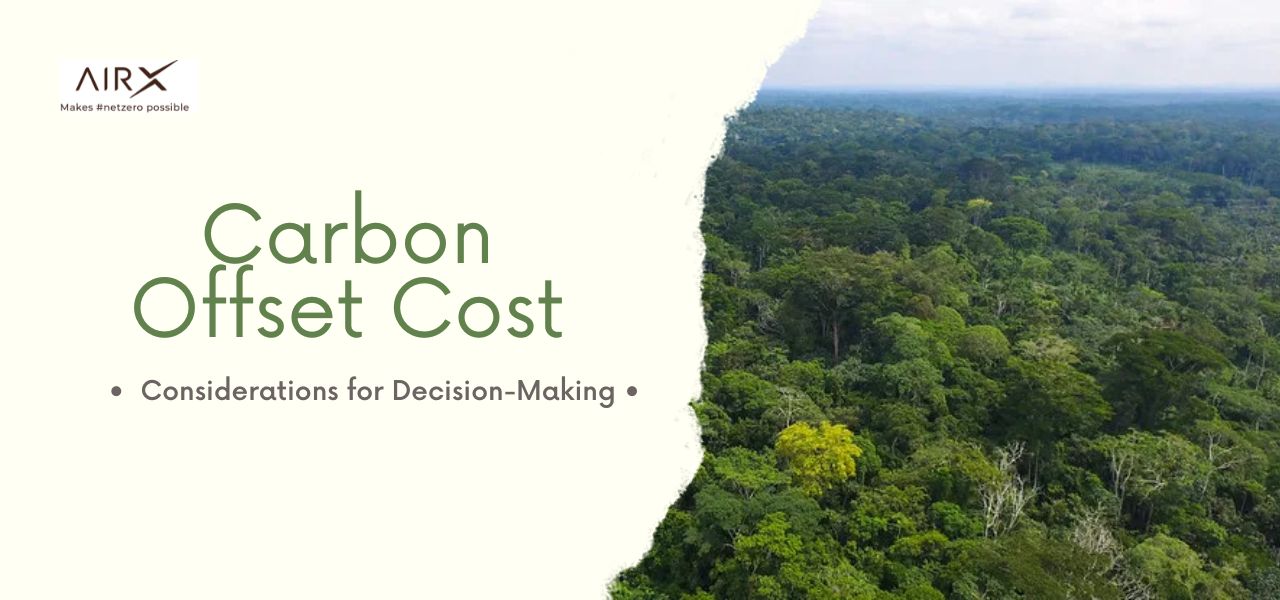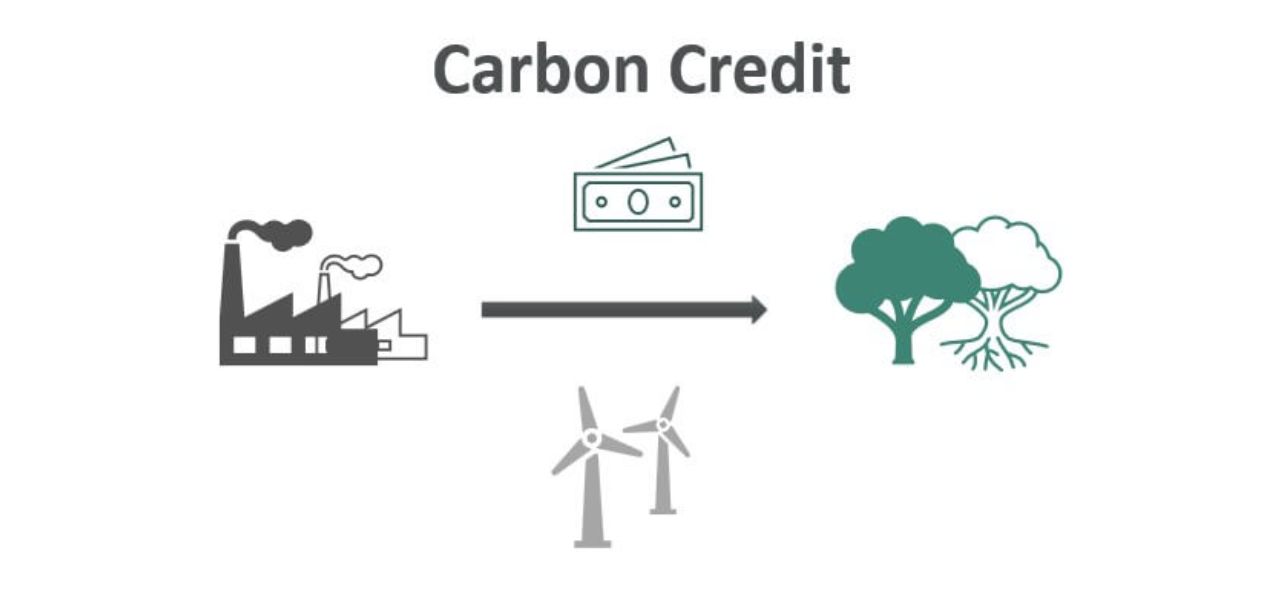Carbon Offset Cost Factors and Considerations for Decision-Making

In the pursuit of mitigating climate change and achieving sustainability goals, businesses are increasingly turning to paying carbon offset cost as a valuable strategy. Carbon offsetting allows companies to compensate for their greenhouse gas emissions by investing in projects that reduce or remove an equivalent amount of carbon dioxide from the atmosphere.
However, understanding the intricacies of carbon offsetting, particularly the associated costs, is crucial for effective decision-making. In this blog, we will delve into the factors that influence carbon offset cost, and discuss important considerations that businesses should keep in mind. By gaining insights into carbon offset cost, businesses can make informed decisions and take meaningful steps towards a more sustainable future.
Factors Influencing Carbon Offset Cost
When considering carbon offsetting as a strategy for mitigating greenhouse gas emissions, understanding the factors that influence carbon offset cost is crucial. Several key elements contribute to the pricing of carbon offsets, including market factors, project-specific factors, and certification and verification standards.
Market Factors:
Supply and demand dynamics play a significant role in determining carbon offset cost. The availability of high-quality carbon offsets in the market, coupled with the demand from businesses and individuals seeking to offset their emissions, can impact the overall cost. Additionally, trading platforms and intermediaries involved in carbon offset transactions can influence prices due to variations in transaction fees and market competition. Price fluctuations may occur as market conditions change over time.
Project-Specific Factors:
The location, project type, and scale of projects can also affect the carbon offset cost. Carbon offset projects implemented in different regions may have varying costs due to variations in local regulations, resource availability, and project development costs. The complexity and scope of the project, such as renewable energy projects or afforestation initiatives, can also influence the cost. Large-scale projects may require significant upfront investments, affecting the price per ton of carbon dioxide equivalent (CO2e).

Certification and Verification Standards:
Certification and verification standards are crucial for ensuring the credibility and environmental integrity of carbon offsets. Different standards, such as the Verified Carbon Standard (VCS) or the Gold Standard, have specific criteria and methodologies for project validation, monitoring, and verification. Compliance with these standards adds value and legitimacy to the carbon offsets but may also contribute to additional costs associated with the certification process. The rigor and credibility of the chosen certification and verification standards can impact the overall carbon offset cost.
Understanding these factors is essential for businesses and individuals seeking to make informed decisions about paying carbon offset cost. By considering market dynamics, project-specific factors, and certification and verification standards, stakeholders can evaluate the cost-effectiveness and environmental impact of different carbon offset options. This knowledge enables them to select the most suitable carbon offsets that align with their sustainability goals and financial resources.
It's important to note that the carbon offset cost should not be the sole consideration when choosing carbon offset projects. Evaluating the co-benefits, additionality, and long-term sustainability outcomes of the projects is equally important to ensure the desired environmental impact and contribute to a more sustainable future.
Considerations for Decision-Making
When it comes to carbon offsetting, businesses must carefully consider various factors to make informed decisions. One crucial aspect is the carbon offset cost, which plays a significant role in determining the feasibility and effectiveness of offsetting efforts. Here are some key considerations to keep in mind:
Cost per ton of carbon dioxide equivalent (CO2e) and its significance:
The cost per ton of CO2e is a fundamental metric that determines the financial implications of carbon offsetting. It represents the price businesses pay to offset one metric ton of greenhouse gas emissions. Understanding this carbon credit or carbon offset cost helps businesses assess the financial feasibility of offsetting projects and compare different options.

Comparison with internal emission reduction measures:
It is essential to weigh the benefits and carbon offset costs against internal emission reduction measures. Businesses should evaluate whether investing in offset projects is more cost-effective than implementing in-house emission reduction strategies. This assessment ensures that offsetting efforts align with broader sustainability goals and optimize the allocation of resources.
Co-benefits and sustainability outcomes:
Carbon offset projects can have co-benefits beyond emission reduction, such as biodiversity conservation, community development, or renewable energy deployment. Evaluating these co-benefits allows businesses to assess the broader environmental and social impact of their offsetting initiatives. Choosing projects that align with corporate values and contribute to sustainable development enhances the overall value proposition of carbon offset cost.
Long-term cost projections and risk assessment:
Carbon offsetting is a long-term commitment, and businesses need to consider future cost projections and potential risks. Assessing the stability of carbon offset cost, regulatory changes, and market dynamics helps in making strategic decisions. Conducting risk assessments ensures that businesses are prepared for uncertainties and can adapt their offsetting strategies accordingly.
By considering these factors, businesses can make well-informed decisions regarding carbon offset cost. It is crucial to strike a balance between cost-effectiveness, environmental impact, and long-term sustainability. Implementing a comprehensive approach that addresses these considerations enables businesses to maximize the benefits of carbon offsetting and contribute to a greener future.
Strategies for Cost-Effective Carbon Offsetting
To achieve cost-effectiveness in carbon offsetting, businesses can adopt various strategies that not only help mitigate their carbon footprint but also optimize the overall cost of offsetting. By implementing these strategies, businesses can make significant progress towards their sustainability goals. Here are some key approaches to consider:
Prioritize Internal Emission Reduction:
One of the most effective ways to reduce carbon offset costs is by prioritizing internal emission reduction measures. This involves identifying and implementing sustainable practices throughout the entire supply chain. For instance, businesses can adopt carbon negative materials, such as plant-based plastic, as an optimized solution to reduce emissions. By replacing traditional plastic with plant-based alternatives, companies can significantly decrease their carbon footprint.

Optimize Carbon Offset Cost:
To optimize carbon offset costs, businesses can employ several techniques. One approach is portfolio diversification, which involves investing in a diverse range of carbon offset projects. This helps spread the risk and ensures a balanced approach to offsetting. Additionally, strategic project selection is crucial. By carefully evaluating and choosing projects that provide the maximum impact per dollar invested, businesses can maximize the cost-effectiveness of their carbon offsetting efforts.
Collaborative Initiatives and Partnerships:
Collaborating with other organizations and forming partnerships can be a cost-effective way to offset carbon emissions. By sharing costs and resources, businesses can collectively invest in larger-scale projects and achieve greater impact. Collaborative initiatives also enable knowledge-sharing and best practices, leading to more efficient and cost-effective carbon offset strategies.
Track and Monitor Progress:
Regularly tracking and monitoring carbon offsetting efforts is essential to evaluate their effectiveness and cost-efficiency. By maintaining accurate records of emissions and offsets, businesses can assess the actual impact of their initiatives. This information can help identify areas for improvement and refine strategies for better cost-effectiveness.
>>> Learn more: Factors Influencing Carbon Offset Prices and Evaluating the Cost-Effectiveness
Contact us
AirX is the world's first carbon-negative bio-material made from coffee grounds manufacturer.
We specialize in producing bio-based composites using recycled carbohydrates derived from by-products such as coffee grounds, coconut husk, husk, and bamboo. Our goal is to promote sustainability through the use of eco-friendly materials.
We are always here to help and provide the best service possible. If you have any questions or would like to receive advice and feedback directly from our sales staff, please do not hesitate to contact us. You can reach us through:
- Whatsapp: +84 969 742 950
- Email: [email protected]
We look forward to hearing from you!

